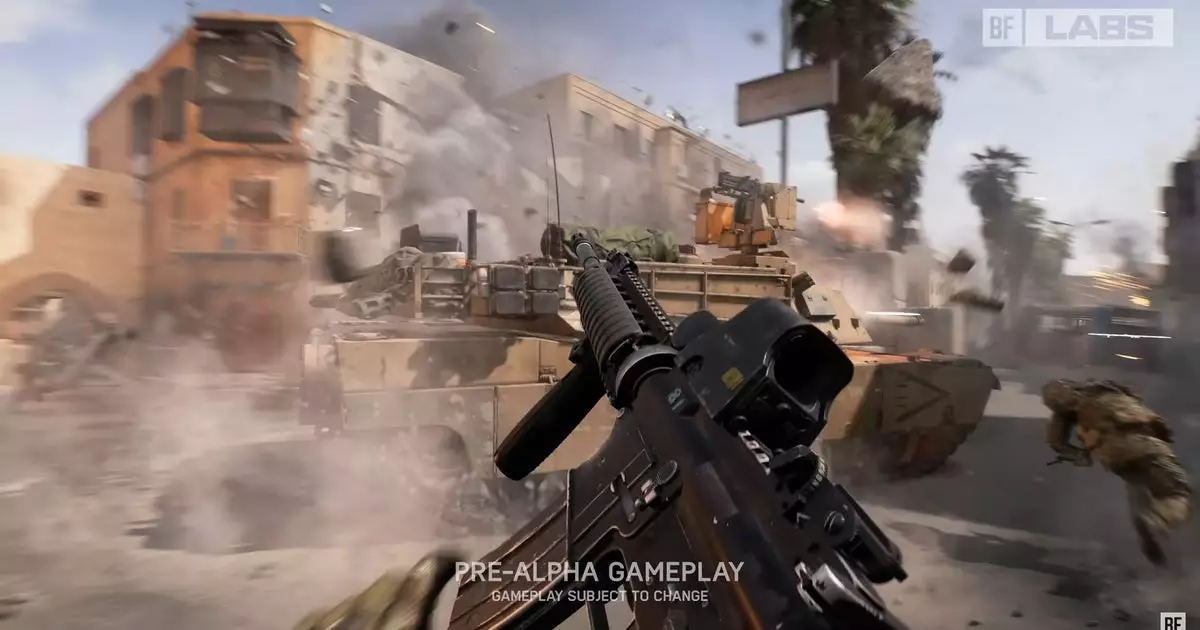With the launch of any highly anticipated video game, such as Battlefield 6, marketing plays a pivotal role in shaping public perception. The recent promotional video for the upcoming title bursts forth with chaos—gunfire, crumbling buildings, and the loud clamor of virtual warfare. Advertisements like this aim to get viewers excited, but how much substance lies beneath the noise? While the clip showcases typical elements at the heart of the Battlefield franchise—like destructible environments and intense combat scenarios—the substance of the producers’ promises seems less certain. The notion of “leveling up” the “core experience,” at its core, feels more like a reiteration of past achievements than a bold declaration of innovation.
From the footage glimpsed in the promotional clip, it’s evident that rehashed mechanics continue to prevail. Although visual enhancements are expected, the foundational gameplay loops appear to mirror those established by earlier entries in the series. Sure, players can expect the cathartic thrill of obliterating structures with explosive weaponry, but it raises questions: What truly differentiates this iteration from its predecessors? Does a new coat of paint and updated graphics hold the potential to entice long-time fans? While reassurance comes in glimpses of familiar mechanics, the excitement begins to wane when considering the innovation promised by the developers, including DICE, Criterion, Motive, and Ripple Effect.
One notable point raised by the producers is the introduction of “Battlefield Labs,” a program designed to involve the public in playtesting the game. While this initiative seems friendly, it subliminally suggests a reliance on external feedback rather than solidifying a distinct vision at the outset. The implications of sourcing public playtesters are multifaceted—while it invites community engagement, it simultaneously raises concerns about developers lacking confidence in their product. Moreover, such strategies are not unique to Battlefield, as similar approaches have surfaced in other EA franchises. The prospect of playtesting casts a spotlight on a certain level of uncertainty, or perhaps desperation, within the corporate framework.
Lastly, while the collaborative effort across various studios signals ambition, there’s an undercurrent of disorganization worth analyzing. Criterion’s involvement in Battlefield 6 has already led to the postponement of their Need for Speed project, revealing a potential compromise in quality across their portfolio. Furthermore, the omission of Ridgeline Games—once intended to bolster the game’s development—leaves an unspoken absence, hinting at potential turmoil within EA’s broader strategy. Such corporate maneuverings inevitably lead to skepticism among audiences, as the image of unity presented in the video is juxtaposed against the backdrop of these internal struggles.
As excitement mounts for Battlefield 6, the promotional material raises more questions than it answers. The mixture of old and new gameplay promises highlights the challenges of innovation within established franchises. With the public’s involvement and the shifting landscape of studio collaborations, the game’s future remains uncertain. Ultimately, fans must wait to see whether the upcoming release will truly resonate or fall into the trap of mediocrity that often plagues sequels in the gaming world. The road to Battlefield 6 is paved with hopes, but will it deliver upon the expectations or simply echo past numbers?

